Adding Tooltips to Tabs Widget Walkthrough#
This page will guide you through how to add a Tooltip to the Tabs widget using Material UI components.
Create a New Tabs Widget#
Start by creating a new Tabs widget in the Squirro Widget Editor with a few tabs as shown in the example below:
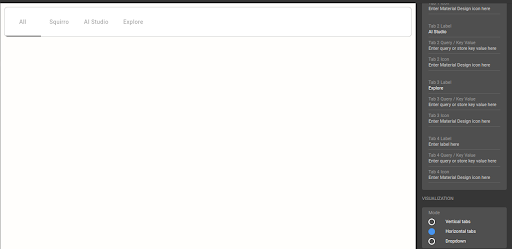
Match Configuration in Storybook#
Select the Tabs widget and use Controls to configure the Storybook preview to match the horizontal display within your project.
Next, use the Components Inspector and identify the components requiring styling. When HorizontalTab is identified, click it to open the component in Storybook.
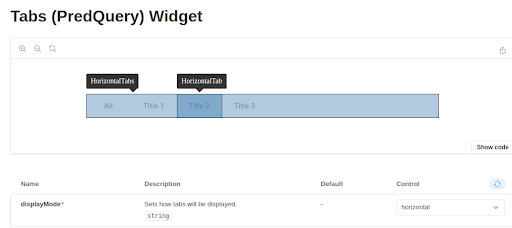
Identify Properties to Style#
With the HorizontalTab component open in Storybook, you can see it has a label property. This property doesn’t explicitly state it can be used for tooltips, but knowing the property can represent a text or element is sufficient.
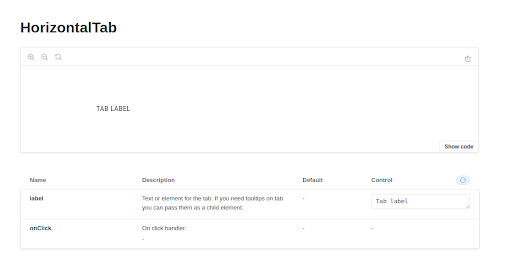
Find Components in Material UI#
When creating new components or functionalities it’s best practice to check if a component already exists in Material UI.
Going to the Material UI website and searching for tooltip locates a Tooltip component.
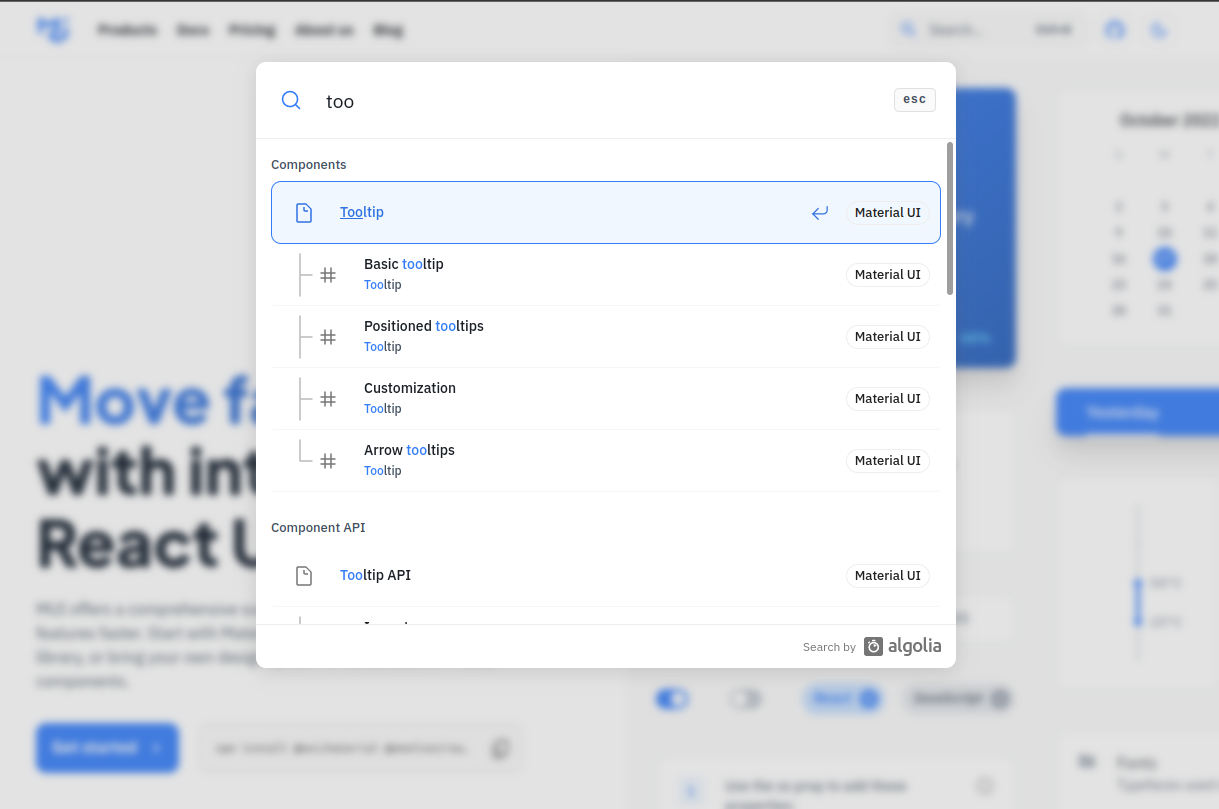
Opening the Basic tooltip shows how to use it:
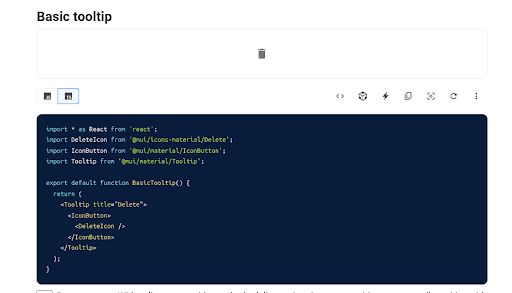
The image above shows an example of how the component needs to be wrapped in a Tooltip component.
For your HorizontalTab component, you must wrap each label in a Tooltip component.
The tooltip content must be passed as a title property to the Tooltip component.
Using Material UI Components in the Squirro Widget Editor#
Squirro has preloaded Material UI components in the platform. You do not need to manually import each MUI component.
You can access each Material UI component via the global variable MUI.
To use the MUI Tooltip, use: <MUI.Tooltip title=”YourInput”></MUI.Tooltip>
Create a New Custom File#
In the example below you can see the labelWithTooltip variable with the Material UI tooltip component spanning the label text.
export default (props) => {
const tooltip_mapping = {
"Squirro": "Squirro Tooltip",
"AI Studio": "AI Studio Tooltip",
"Explore": "Explore Tooltip",
};
const tooltip = tooltip_mapping[props.label] || '';
const labelWithTooltip = <MUI.Tooltip title={tooltip}><span>{props.label}</span></MUI.Tooltip>;
return <Overrides.PredQuery.HorizontalTab {...props} label={labelWithTooltip} />;
}
It uses the label available in the props (as defined in the Storybook) and wraps it in the tooltip.
In the final return line, the default HorzontalTab component is passed and its label property is overridden.

Now, you can expand its capabilities by using different tooltips for each tab, as shown below:

Modify Main.js#
With the custom file created, you can now override the default HorizontalTab component in main.js:
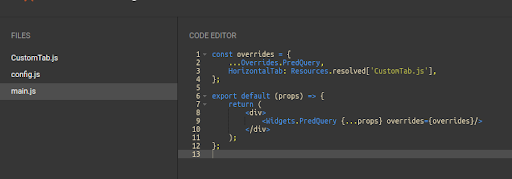
Preview Result#
You can verify the styling is working correctly by clicking Run in the top-right toolbar of the Widget Editor.

Note that clicking Save will not preview your changes if you do not first Run them.
